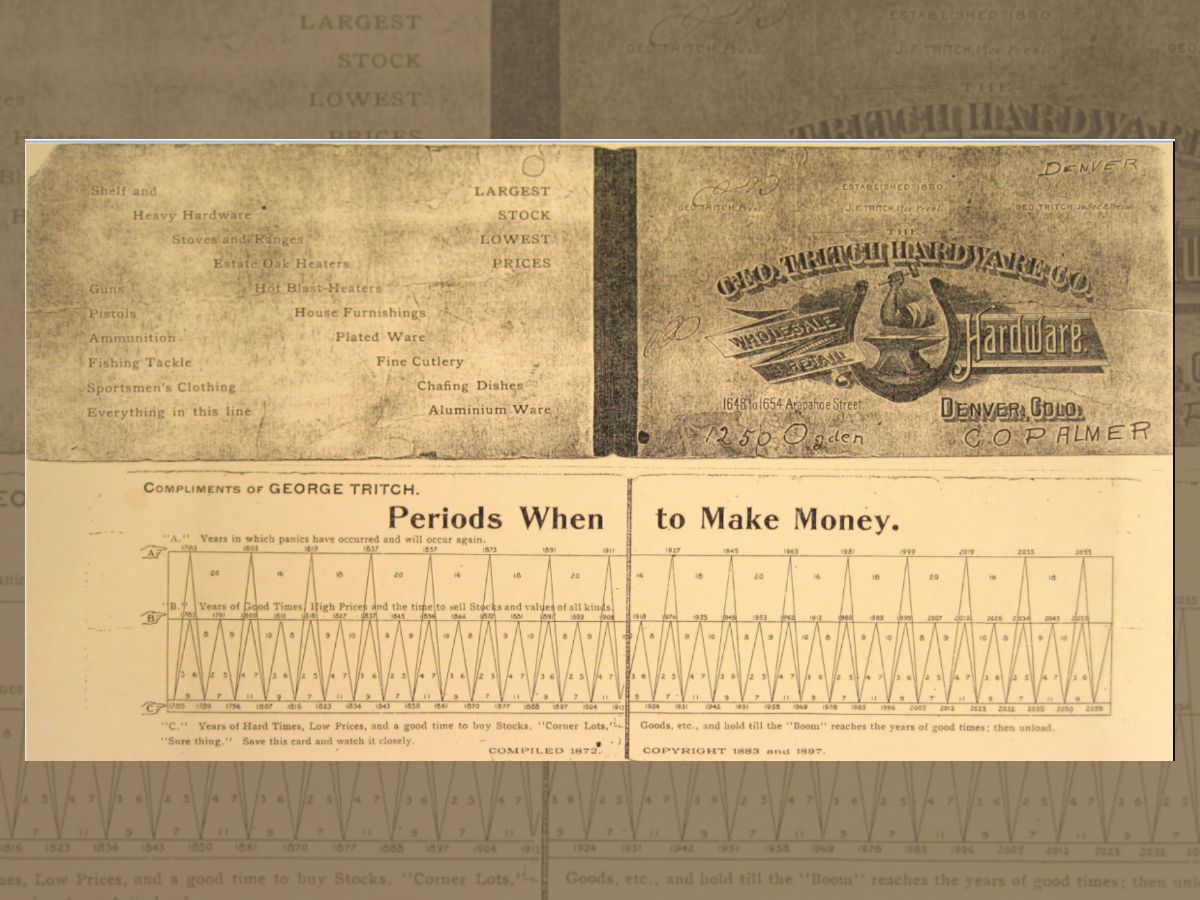The Benner Cycle: A 150-Year-Old Prediction That Continues to Shape Market Insights
Introduction
For over 150 years, financial markets have experienced cycles of boom and bust, often following patterns that analysts strive to understand. One such fascinating predictive model is the Benner Cycle, developed in 1875 by Samuel Benner, an Ohio farmer turned economist. His cycle has eerily predicted major economic downturns and recoveries, including the 1929 stock market crash, the dot-com bubble, and more. Could it hold the key to predicting future market movements?
Who Was Samuel Benner, and How Did He Predict Economic Trends?
Samuel Benner was a 19th-century American farmer from Ohio who, after suffering financial losses during the Panic of 1873, sought to understand economic cycles to prevent future ruin. Unlike professional economists, Benner did not have formal financial training but relied on observational analysis, pattern recognition, and historical data to develop his predictive model.
Living through periods of economic hardship, he meticulously documented price fluctuations in agriculture, commodities, and financial markets. By studying these trends, he identified repeating cycles of prosperity and downturns, leading him to publish Benner’s Prophecies of Future Ups and Downs in Prices in 1875. His predictions were based on observed economic trends rather than mathematical models, yet they have remained remarkably relevant for over a century.
His approach combined elements of cyclical analysis, economic psychology, and market behavior, making his model a valuable tool even in modern times. The Benner Cycle has been cited for correctly forecasting major economic downturns, including the Great Depression and the 2008 financial crisis.
The Benner Cycle is a historical forecasting model based on economic peaks and troughs. Samuel Benner created this after suffering financial losses during the Panic of 1873, seeking a way to anticipate market trends and avoid financial ruin. His model suggests that financial markets move in cyclical patterns, with some periods marked by prosperity and others by downturns.
The cycle consists of major and minor patterns, represented by different trends over time. It identifies years of economic prosperity, intermediate declines, and deep recessions. Interestingly, the cycle has been recognized for aligning with historical financial events, lending credibility to its predictive power.
Visualizing the Benner Cycle
To better understand the Benner Cycle, below is a visual representation of its historical patterns and future projections. This chart highlights the repeating trends of market peaks and declines, showing how the cycle has played out over the decades.
 |
| Benner Cycle |
How Accurate is the Benner Cycle?
Many analysts and investors have noted how the Benner Cycle has successfully predicted market fluctuations over the decades. Some of its major historical predictions include:
- The 1927 Pre-Depression Market Bubble, leading to the 1929 Great Depression
- The 1945 Post-WWII Economic Boom and Market Realignment
- The 1965 Stock Market Turmoil and Economic Slowdown
- The 1981 Recession and Inflation Crisis
- The 1987 Black Monday Crash
- The 1999 Dot-Com Bubble Peak
- The 2008 Global Financial Crisis
- The 2019 Economic Uncertainty and Pre-Pandemic Market Instability
- The Bull Market of the 1990s and early 2000s
Looking ahead, the Benner Cycle also predicts possible downturns in 2035 and 2053, raising concerns about future market conditions. While no model is perfect, the Benner Cycle’s historical accuracy in predicting market trends makes it an interesting tool for long-term investors.
What Does the Benner Cycle Predict for the Future?
According to the Benner Cycle, the stock market is expected to experience a strong uptrend from 2023 to 2026, marking a period of prosperity and recovery. However, it also signals caution beyond 2026, as a potential bear market could emerge and last until 2032.
This means investors may experience another downturn, similar to historical patterns of market corrections. While these predictions shouldn’t be taken as financial advice, they provide an additional lens through which market cycles can be understood.
Criticism and Limitations of the Benner Cycle
Despite its historical alignment with market trends, the Benner Cycle is not without its critics. Some of the key limitations include:
- Lack of Precision: While the cycle predicts broad trends, it does not provide exact dates or magnitudes of market shifts.
- Market Complexity: Modern financial markets are influenced by factors such as government policies, geopolitical events, and technological disruptions, which the Benner Cycle does not account for.
- No Guarantee of Future Accuracy: Just because the cycle has aligned with past events does not mean it will continue to do so in the future.
Should You Rely on the Benner Cycle for Investing?
While the Benner Cycle has shown remarkable accuracy, it should not be used as a sole investment tool. Instead, it serves as a supplementary indicator when combined with other technical and fundamental analysis methods.
Smart investors should always:
- Diversify their portfolios
- Stay informed about global economic trends
- Use multiple tools to analyze market conditions
Conclusion
The Benner Cycle remains a fascinating study of financial market patterns, continuing to provide insights into economic trends more than a century after its creation. Whether you're a seasoned investor or a market enthusiast, understanding economic cycles can help you make more informed decisions. As we approach 2026 and beyond, it will be interesting to see whether Benner’s predictions continue to hold true.
What Do You Think?
Would you consider the Benner Cycle when making investment decisions? Do you believe in its predictive power, or do you think modern market influences make it less relevant? Share your thoughts in the comments below!
You may like
Read more:





